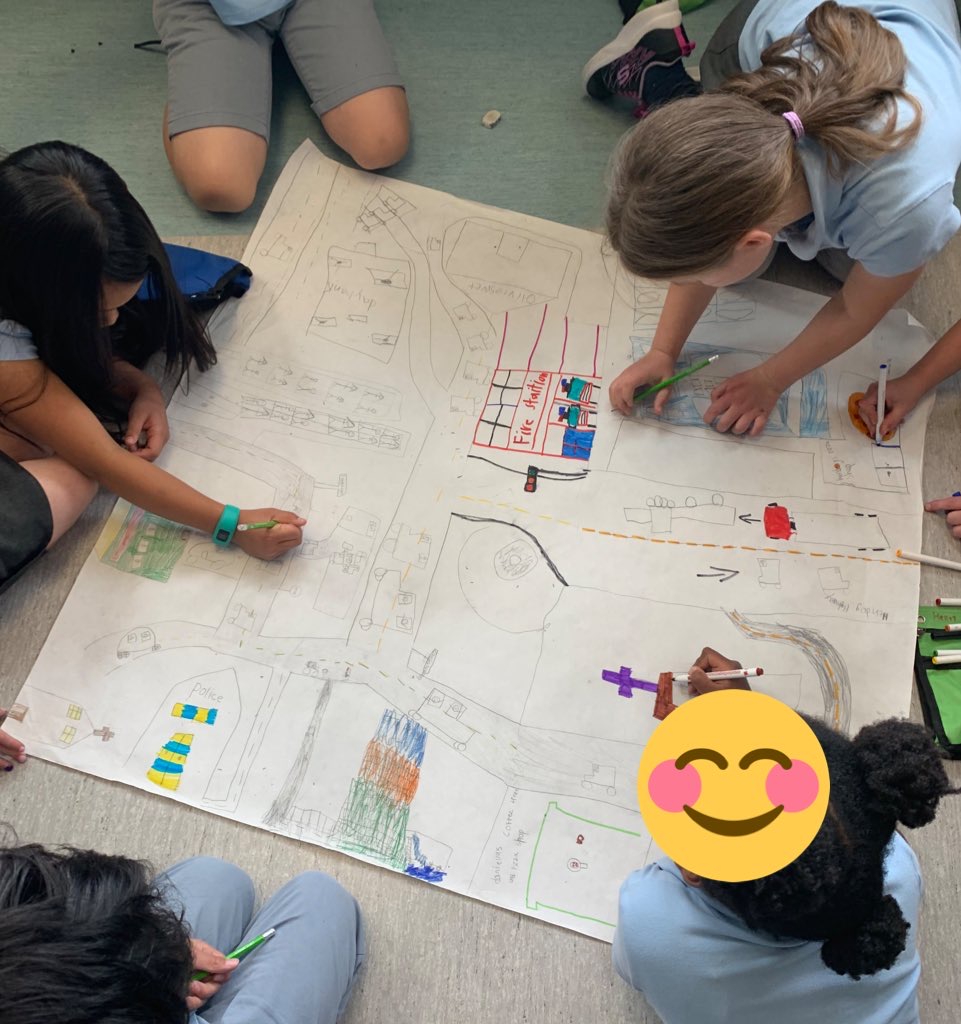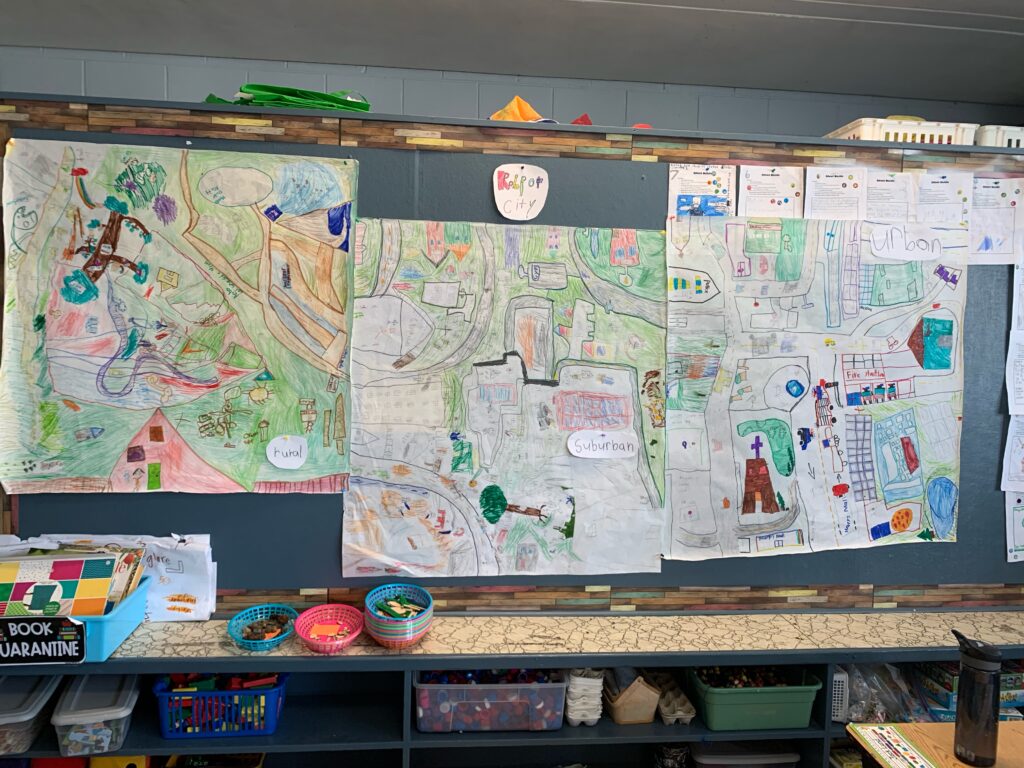Educators demonstrate a broad knowledge base and an understanding of areas they teach.
I have implemented hands-on learning and cross-curriculum lessons during my practicums. Both approaches have allowed me to demonstrate my broad knowledge in various academic areas. For example, I designed a lesson plan to conclude a unit on Communities (Grade 2). We had previously discussed Rural, Suburban, and Urban communities (in three separate lessons). For the fourth and final lesson, the students (in three groups) were instructed to draw one of the types of communities on chart paper. Using the characteristics of the community as their guideline, the students thoughtfully designed living spaces, economic initiatives, transportation, and populations that would fit within the constraint of the community. In other words, students were reflecting on the Communities Unit while being hands-on with their “making” of their community. Prior to the lesson I drew roads that went through the chart paper in a cross pattern. At the end of the lesson, the class brought their chart paper to the front board where it was attached with tape. Each community was connected by their roadways. The completed map shows how different types of communities fit together. I feel the lesson shows how I implemented hands-on learning as well as my knowledge of art education to conclude and deepen the students’ knowledge of different types of communities, their characteristics, and their interdependence.


Another example of how I showed broad knowledge was by creating a lesson where students practiced addition and subtraction using Chinese numbers (words and characters) up to 10. In a previous Language lesson, the students were introduced to and practiced saying and drawing Chinese numbers 1 to 10. In the math lesson, the students added and subtracted bubbles (or tapioca pearls) from bubble tea using Chinese numbers. I was surprised to see that two students who have weaker math skills embraced the opportunity to do math in Chinese, a language they had just learned. My CT and I discussed how sometimes students can find confidence in an area that they have struggled in when the teacher approaches the topic through the lens of another subject or through an alternative method of practice. For example, many students often find mathematics easier if they practice it using hands-on activities. In the case of practicing addition and subtraction using Chinese numbers up to 10, strong students felt pride in asking for more numbers to work with. Weaker students used their knowledge of Chinese numbers to build confidence practicing equations. Overall, I was able to use my language knowledge to strong effect in both a Language lesson and a Mathematics lesson on addition and subtraction. The cross-curricular learning was deemed a success by my CT and the students.
I am interested in many academic areas, but art education and languages are two knowledge bases where I have a deep understanding of how to apply hands-on and cross-curricular learning to the BC Curriculum. I am always working to deepen my knowledge of the subject areas I teach, and I hope that my eagerness to learn deeply is contagious to my students.